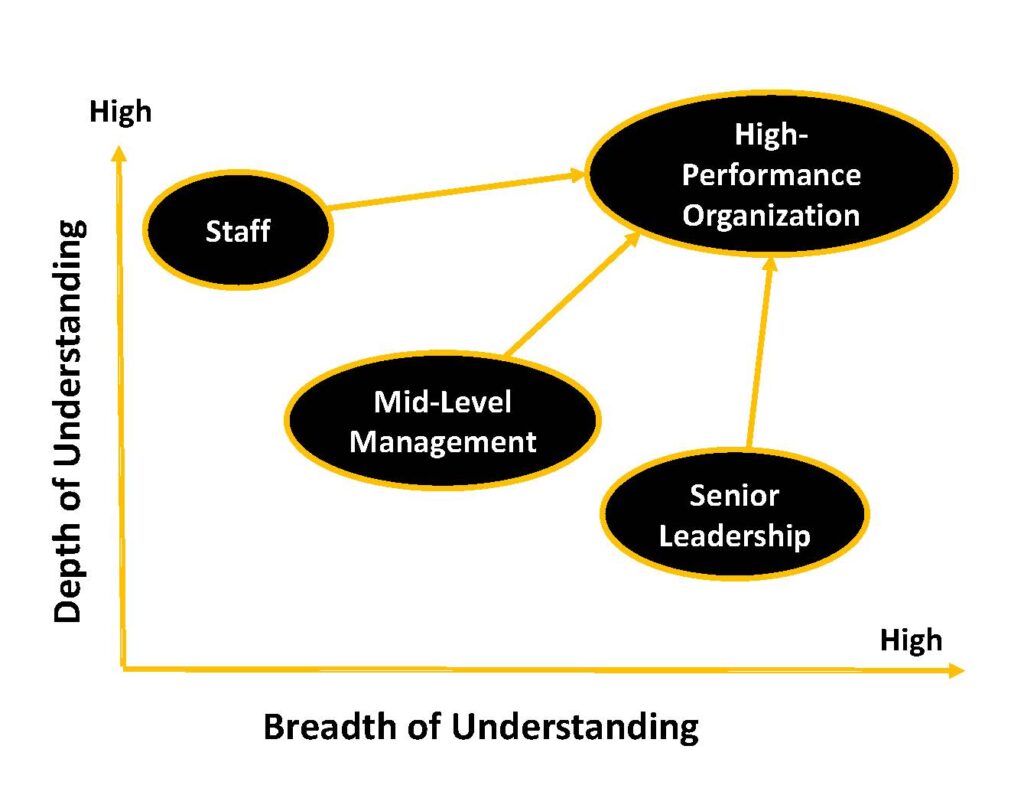Agencies that want to enable future digital capabilities are working to build digital maturity across their business strategy, data, culture, architecture, and governance. Digital maturity refers to the degree to which data is integrated into the organization and fully incorporated into decision making and practices. The measure of that maturity is the extent to which organizations utilize their data and how likely they are to have the data they need as system capabilities expand and new technologies emerge.
Planning for an organizational change relies on understanding how data supports the value streams of an organization and how the organization maintains the balance between data and process in the quest to leverage their digital assets. Value streams describe the way business gets done – how value is created. Striking balance between data and process means that processes must adapt, if not outright look for, new data requirements. Agencies balance data and process when the mission defines the data it needs and the processes required to achieve it.
Agencies working to gain value from their digital assets are likely engaged in IT modernization, upgrading or replacing those systems that are at the end of their lifecycle, and, or digital transformation, rethinking how they serve their customers and how they deliver value using their digital assets. In both cases, to realize future capabilities each aspect of the business has to mature digitally – this doesn’t need to occur uniformly, but does have to advance holistically. In total this means that each operation and the organization as a whole is moving away from localized and siloed application data toward enterprise accessible data by divesting in their application architecture and investing in their data infrastructure.

This progression requires harnessing knowledge and experience across each value stream or business area. Gaining buy-in from business area owners requires coordinating across the organization with individuals and committees who may not meet or work together in their daily jobs. The coordination of multiple perspectives requires resolving discrepancies and disagreements. In our digital maturation practice we resolve discrepancies by focusing on the most precise possible understanding of misalignment in order to increase the likelihood of discovering a useful and agreed upon solution.
Combining the entire team’s understanding of how data is used, is essential because data only has meaning in context and they have the best knowledge of that context. The organization’s mission underlies context and must be clearly understood all the way through the organization. Leveraging this understanding allows organizations to structure data architecture to serve the mission, instead of for individual IT applications. Likewise, governance must be based on a shared understanding of the mission and its data needs.
While establishing universal understanding of your data and processes, it is useful to map out the business value streams, measure existing maturity, and plan to advance value streams accordingly. Mapping the organization helps build buy-in and participation that only comes from an informed and common understanding of the mission and how the business works to accomplish that mission.
The economic and organizational costs to engineer data and process transformations can be great, but so is the upside of enabling the adoption of new and emerging technologies. Hiring a firm with expertise in turning dialogue into architecture is a key first step to predictable success. ISS and our partner Wise Design have the methods and experience to help organizations meet the digital demands of today and tomorrow.




